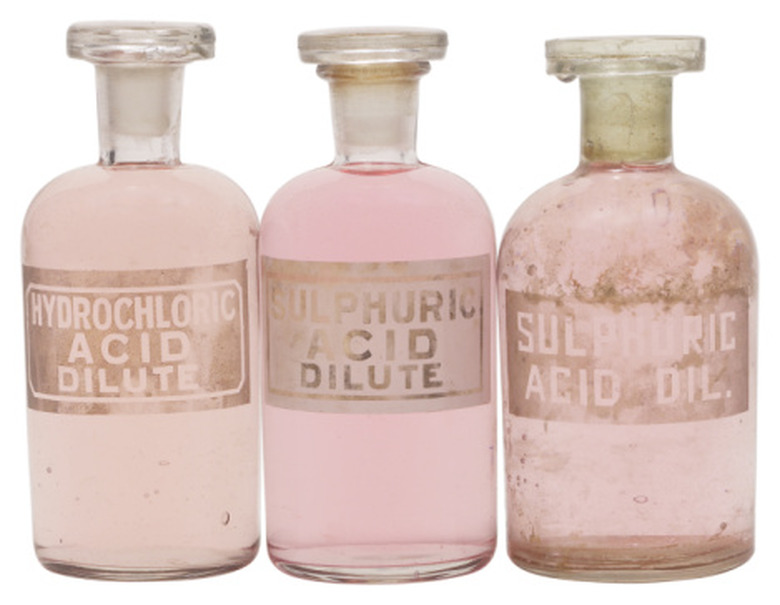How To Dissolve Iron
Iron doesn't dissolve readily in water, although it will definitely rust more rapidly (as you've probably noticed from experience). Hydrochloric acid, however, can dissolve iron, and a more concentrated solution will dissolve it more rapidly. This simple experiment makes a great way to study reaction kinetics, but it does pose some possible hazards. First of all, it releases highly flammable hydrogen gas, so it should be performed under a fume hood. Moreover, hydrochloric acid is also a hazardous chemical if misused; it's especially important to avoid spilling it on skin or eyes. With these cautions in mind, you can dissolve iron using hydrochloric acid.
Step 1
Don your safety equipment, including goggles, gloves and coat. Make sure you have closed-toed shoes on.
Step 2
Place the iron nail in the beaker. It's preferable to use a nail short enough so it will fit at the bottom of the beaker, since that way you can submerge it completely in the HCl.
Step 3
Place the beaker and hydrochloric acid in the fume hood, together with your graduated cylinder. Make sure it is switched on and running properly (consult the manufacturer's instructions for specifics).
Step 4
Measure out 100 mL of the 1 molar HCl using your graduated cylinder and pour it over the iron nail.
Things Needed
- Goggles
- Gloves
- Lab coat
- Iron nail
- Beaker
- 1 molar hydrochloric acid
- Fume hood
- Graduated cylinder
TL;DR (Too Long; Didn't Read)
Hydrochloric acid is often used to pickle steel by removing rust from its surface.
A more concentrated solution of HCl will dissolve iron more rapidly, but concentrated solutions are also more hazardous to work with, so you should keep that in mind when designing your experiment. You could also try using different concentrations of HCl to study the effect of concentration on rate of reaction.
Warning
Again, remember that this reaction releases flammable gas, and the acid you are using is highly corrosive. Perform the experiment under a fume hood, and do not allow the acid to come in contact with your face or skin. Wear protective clothing throughout the experiment.
References
- Frostburg College Chemistry: Why Won't Iron Dissolve as Easily in HNO3 as it Does in HCL?
- Journal of Chemical Education: Dissolving Iron Nails: A Kinetics Experiment
- "Chemical Principles: The Quest for Insight"; Peter Atkins, et al.; 2008
Cite This Article
MLA
Brennan, John. "How To Dissolve Iron" sciencing.com, https://www.sciencing.com/dissolve-iron-8374475/. 24 April 2017.
APA
Brennan, John. (2017, April 24). How To Dissolve Iron. sciencing.com. Retrieved from https://www.sciencing.com/dissolve-iron-8374475/
Chicago
Brennan, John. How To Dissolve Iron last modified March 24, 2022. https://www.sciencing.com/dissolve-iron-8374475/
